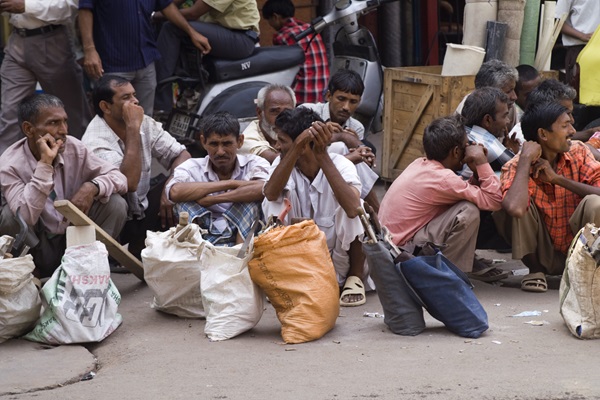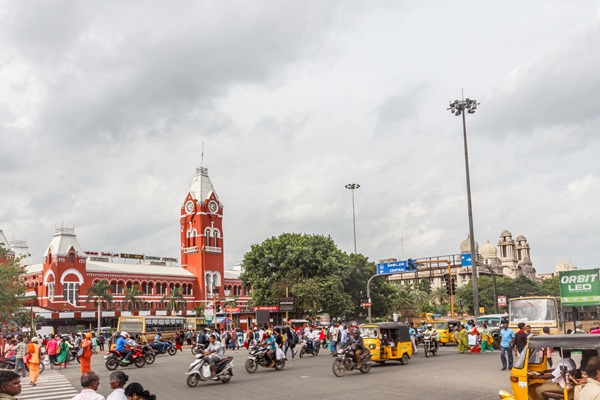.png)
India’s Easing Joblessness Masks a Deeper Gender Divide in Employment
Unemployment eased in August, but the gains bypassed women and the young. Beneath the PLFS headline figures lies a troubling labour market fault line.

Akshi Chawla is a Delhi-based independent writer and editorial consultant.
September 16, 2025 at 5:17 AM IST
India’s headline unemployment rate fell for the second straight month in August 2025, when it dipped from 5.2% in July to 5.1%, according to the latest bulletin of the Periodic Labour Force Survey. At first glance, this suggests a labour market inching towards stability. Urban unemployment, which had been rising since April, eased half a percentage point to 6.7%, while rural unemployment was estimated at 4.3%.
Yet the data conceals sharper undercurrents. The employment gains were concentrated among men, across age groups and sectors, leaving women struggling with rising joblessness. For men, the estimated unemployment rate dipped to 5% in August from 5.3% a month earlier. For women, however, it ticked upward from 5.1% to 5.2%.
Nowhere is this imbalance starker than among the young. Despite some improvement, unemployment for Indians aged 15-29 remained above 10%, with urban youth facing rates as high as 18%.
For women in this group, the picture is bleaker still: unemployment in urban areas was estimated at a staggering 25.7% in August, the highest of any demographic and higher than the 25.1% recorded in July. Their male counterparts also faced high unemployment rates of 15.6%, though this reflected a notable improvement of 1.5 percentage points compared to a month ago. In rural India, young women saw unemployment worsen by 1.3 percentage points to 14.3%, while young men experienced a modest decline to 12.6%.
Labour Strain
Labour force participation offers another layer of insight. The overall participation rate for those aged 15 and above rose slightly to 55% in August.
For men, it was almost unchanged at 77%, while women’s participation edged up from 33.3% in July to 33.7%. Rural participation remained higher at 57% compared to urban at 50.9%. The largest month-on-month shift came from young men in cities, where participation rose from 59.1% to 59.9%. In contrast, their rural counterparts saw a decline from 61.7% in July to 61% in August.
The LFPR includes those who are currently employed—either in regular wage salaried work, or casual labour, or are self-employed—or are looking for work but not employed.
Encouragingly, women’s labour force participation showed small gains across categories. In rural areas, it rose by half a percentage point to 37.4%. More women were working or seeking work, but they were simultaneously more likely to face rejection by the labour market.
The dual trend — rising participation but higher unemployment — highlights a structural weakness: demand for women’s labour remains tepid, and suitable jobs are scarce.
This is not a passing distortion. Indian women’s labour force participation has remained much lower than the global average and that of its peers. When women do join the workforce, they face higher unemployment rates, underscoring systemic barriers. The August data is a reminder that easing of headline unemployment cannot be read as a straightforward success.
The Numbers Behind
What is the unemployment rate? How is it calculated, and what do these figures mean?
The PLFS, conducted by the Ministry of Statistics and Programme Implementation, estimates unemployment through extensive household surveys. The August 2025 release was based on responses from 376,839 individuals across 89,282 households.
A person is classified as unemployed if, despite seeking or being available for work, they did not work even for one hour in the reference week. They are different from those who are neither working nor looking for work. Such individuals are considered to be out of the labour force.
Unlike inflation, for which India has an “ideal” target range, there is no ideal “unemployment” figure. Economists often suggest that 3-5% reflects “natural unemployment”, necessary for a dynamic economy. India’s aggregate figure of 5.1% appears closer to that threshold, but it hides worrying fractures. Youth unemployment above 10%, urban unemployment nearing 7%, and women’s unemployment rates surging past 25% in some categories are not signs of a healthy labour market.
Over the past four months, these vulnerabilities have deepened. A growing pool of young, educated and aspirational Indians remain excluded from meaningful work. For women, the challenge is even sharper — not only to find jobs but also to overcome cultural and structural barriers to participation. The costs of this exclusion are far from abstract: they affect household incomes, social well-being, and ultimately the country’s economic trajectory.
The headline figure is therefore a cautionary note. India’s job market cannot be judged solely by averages. Until the gender and generational fault lines narrow, the numbers will continue to understate the depth of the employment crisis.



